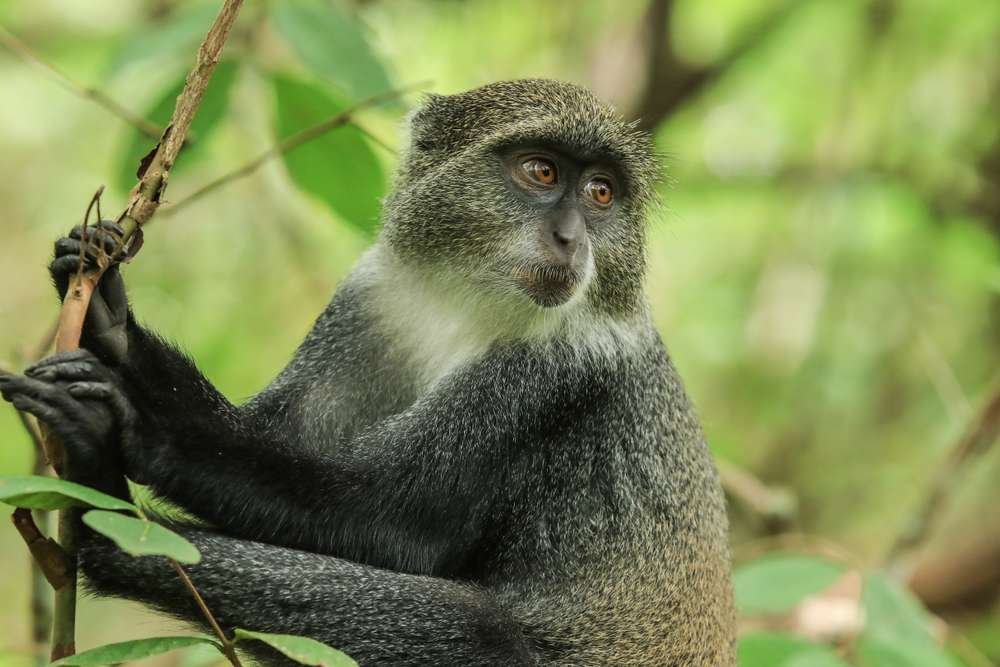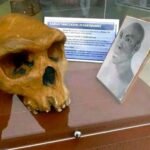Blue Monkey
( diademed monkey )
- Cercopithecus mitis and Cercopithecus mitis moloneyi
- IUCN Status: Least Concern
- Trend: decreasing

- Kingdom: Animalia
- Phylum: Chordata
- Class: Mammalia
- Order: Primates
- Suborder: Haplorhini
- Family: Cercopithecidae
- Genus: Cercopithecus
Share:
General Information
The blue Maloney’s monkey is a subspecies of the blue monkey and they have both been sighted in Zambia tough their numbers are few.
Description
Despite its name, the blue monkey is not noticeably blue; it has little hair on its face, and this does sometimes give a blue appearance. It is mainly olive or grey apart from the face (which is dark with a pale or yellowish patch on the forehead from which the species derives its common name), the blackish cap, feet, and front legs, and the mantle, which is brown, olive, or grey depending on the subspecies- Length: 50 to 65 cm
- Weight: up to 8kg
Ecology & Behaviour
The blue monkeys live in female-philopatric social systems where females stay in their natal groups, while males disperse once they reach adulthood. As a result, blue monkey groups usually consist of one male with several females and infants, giving rise to matrilinear societies. Occasionally, solitary males are observed, which are probably transient, having left their natal group in search of a new group.
Distribution & Habitat
The blue monkey (Cercopithecus mitis) is native to Central and East Africa, ranging from the upper Congo River basin east to the East African Rift and south to northern Angola and Zambia. The blue monkey is found in evergreen forests and bamboo forests, and lives largely in the forest canopy, coming to the ground infrequently. It is very dependent on humid, shady areas with plenty of water. It eats mainly fruit and leaves, but will take some slower-moving invertebrates. It prefers to live in tall trees, which provide both food and shelter, and is, therefore, like almost all guenons, suffering from the loss of its natural habitat. Where pine plantations replace natural forest, the monkey may be treated as a threat by foresters, since it sometimes strips bark from exotic trees in a search for food or moisture. Blue monkeys eat fruits, figs, insects, leaves, twigs, and flowers. They are primarily frugivores, with 50% of their diet consisting of fruit, with leaves or insects as their main source of protein, with the rest of the diet being made up of seeds, flowers, and fungi.
Interaction with Humans
They have been known to be hunted for bushmeat in other countries
No donation to this project yet.
| M | T | W | T | F | S | S |
|---|---|---|---|---|---|---|
| 1 | 2 | 3 | 4 | 5 | 6 | |
| 7 | 8 | 9 | 10 | 11 | 12 | 13 |
| 14 | 15 | 16 | 17 | 18 | 19 | 20 |
| 21 | 22 | 23 | 24 | 25 | 26 | 27 |
| 28 | 29 | 30 | ||||

